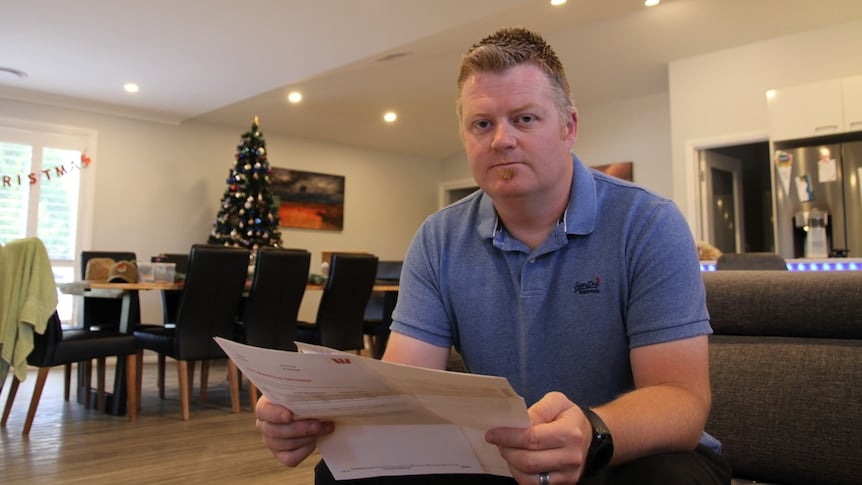When Austin Gregor opened his insurance renewal statement this month, he was expecting a big increase in his premiums, but he never imagined it would be a $20,000 jump.
Key points:
-
Homeowner’s insurance premiums rise from $1,800 to $22,000 after floods
-
He says mandatory cover is ‘prohibitive’ for mortgage holders
-
Insurance Council of Australia says subsidies will only ‘mask’ risk
“It was really a shock,” he said.
His home in North Wagga Wagga, in southern New South Wales, is in an area at risk of flooding and has been the subject of several emergency warnings and an evacuation order over the course of for the past six months due to flooding of the Murrumbidgee River.
He said he knew he would pay more in light of recent events, but called the increase from $1,800 to $22,000 “prohibitive.”
The same increases are seen across the country by other homeowners affected by the floods.
Valerie Myers’ Echuca home was hit during major flooding in the town on the NSW and Victorian border.
While struggling to protect her home from floodwaters, her Westpac renewal arrived in the mail. It had more than tripled.
“We were devastated, absolutely devastated,” she said.
“To get that was just another kick in the gut.”
Its home and content package went from around $2,000 to over $7,000.
Other residents of flood-hit areas, including Barham and Moama in south-west New South Wales, said their insurance had also jumped by similar amounts.
No refusal
Mr Gregor and Ms Myers said they tried to opt out of flood cover, which accounted for most of the increase, but Westpac confirmed it was required in all home insurance policies.
“They’ve got you on a barrel, actually,” Ms. Myers said.
Mr. Gregor said that when he tried to shop around, other companies either refused to provide insurance or offered up to $38,000 for the same coverage.
Like many homeowners, insurance is a condition of Mr. Gregor’s mortgage.
“I guess the current situation is that we have a choice of paying what I would call prohibitive insurance costs, or not being able to insure our house at all,” Mr Gregor said.
Westpac said its insurance was issued by Allianz, which took factors such as extreme weather events and updated flood risk modeling into account when setting prices.
Call for change
Ms Myers said insurance companies needed to provide more transparency and flexibility.
“Something has to be done. The government may have to step in. I don’t think that’s right,” she said.
Mr Gregor expressed concern about how the price hikes would affect other more badly affected areas such as Forbes and Eugowra in central west New South Wales.
“How are they going to be able to afford to insure their house if that’s what happens every time there’s a flood?” he said.
Insurance Council of Australia chief executive Andrew Hall said government intervention would only “mask the risk”, and said the focus should be on rebuilding in safer areas.
“In the Riverina and the central west, we have seen the problem of flooding unfold quite dramatically and tragically,” he said.
“Ultimately, until we can reduce some of these risk factors, insurance premiums will follow an upward trajectory, especially in the most exposed areas.”
